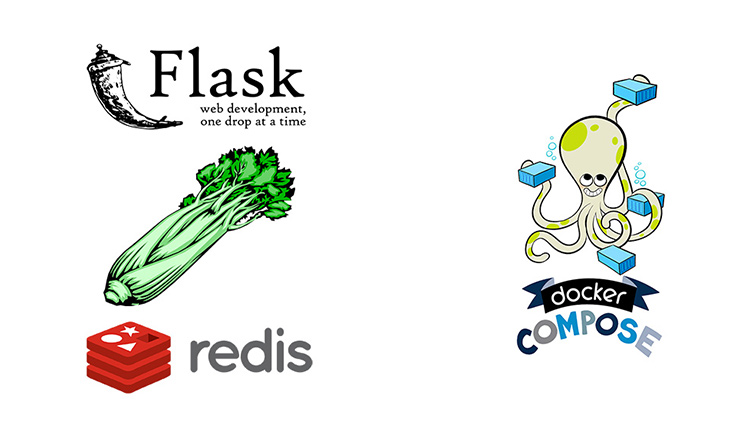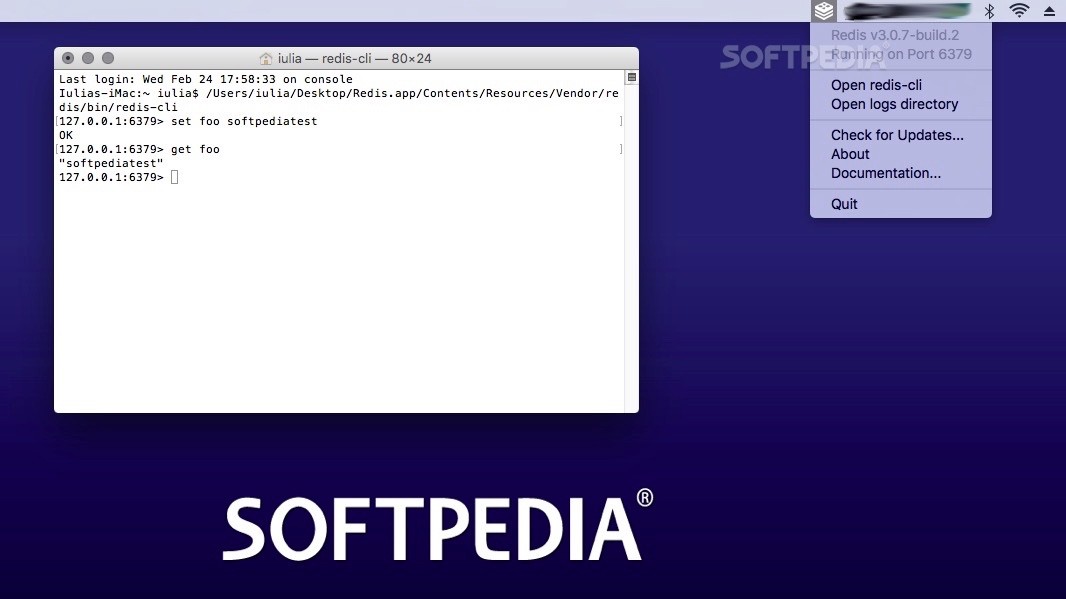Redis uses a standard practice for its versioning: major.minor.patchlevel. An even minor marks a stable release, like 1.2, 2.0, 2.2, 2.4, 2.6, 2.8. Odd minors are used for unstable releases, for example 2.9.x releases are the unstable versions of what will be Redis 3.0 once stable.
- Redis.app provides a straightforward solution for deploying the Redis data structure store on your Mac, without manually compiling the source. The Redis.app utility also renders quick access to the Redis CLI within the Terminal app and to the server's log file.
- For those who prefer using a GUI tool for Redis, TablePlus offers a GUI tool for you to view, edit, and manage your Redis database on Mac. You can also connect and manage multiple Redis databases on multiple servers simultaneously. TablePlus is available for free.
- Download Medis - GUI for Redis for macOS 10.8.0 or later and enjoy it on your Mac. Medis is a beautiful, easy-to-use Redis GUI management application for Redis >= 2.8. Good tool This tool does everything I need it to for my daily work with Redis, my only wish is that it optionally provided a “tree” view of the redis cache similar to.
Redis Desktop Manager (aka RDM) — is a fast open source Redis database management application for Windows, Linux and MacOS. This tool offers you an easy-to-use GUI to access your Redis DB and perform some basic operations: view keys as a tree, CRUD keys, execute commands via shell.
Unstable
This is where all the development happens. Only for hard-core hackers. Use only if you need to test the latest features or performance improvements. This is going to be the next Redis release in a few months.Stable (5.0)
Redis 5.0 is the first version of Redis to introduce the new stream data type with consumer groups, sorted sets blocking pop operations, LFU/LRU info in RDB, Cluster manager inside redis-cli, active defragmentation V2, HyperLogLogs improvements and many other improvements. Redis 5 was release as GA in October 2018.Docker
It is possible to get Docker images of Redis from the Docker Hub. Multiple versions are available, usually updated in a short time after a new release is available.
*Other versions

Old (4.0)
Redis 4.0 was released as GA in July 2017, newcomers should use Redis 5, but Redis 4 is currently the most production-proven release and will be updated for the next year until Redis 6 will be out. It contains several big improvements: a modules system, much better replication (PSYNC2), improvements to eviction policies, threaded DEL/FLUSH, mixed RDB+AOF format, Raspberry Pi support as primary platform, the new MEMORY command, Redis Cluster support for Nat/Docker, active memory defragmentation, memory usage and performance improvements, much faster Redis Cluster key creation, many other smaller features and a number of behavior fixed.See the release notes or download 4.0.14.
*Other
Historical downloads are still available on Google Code.Scripts and other automatic downloads can easily access the tarball of the latest Redis stable version at http://download.redis.io/redis-stable.tar.gz. The source code of the latest stable release is always browsable here, use the file src/version.h in order to extract the version in an automatic way.
*How to verify files for integrity
The Github repository redis-hashes contains a README file with SHA1 digests of released tarball archives. Note: the generic redis-stable.tar.gz tarball does not match any hash because it is modified to untar to the redis-stable directory.
*Installation
Download, extract and compile Redis with:
The binaries that are now compiled are available in the src directory. Run Redis with:
Best merge tool for mac. I recommend vimdiff as best merge tool (vimdiff is a script bundled with vim. It opens vim with pre-defined windows layout). Why it's best? Because it gets job done fast. Merging is tedious. For example, every two weeks we have to merge code between two team's branch.
You can interact with Redis using the built-in client:
Are you new to Redis? Try our online, interactive tutorial.
Chrome Cleanup Tool For Mac
https://ratemygol.netlify.app/debugging-tool-for-mac-sierra-terminal.html. It all comes down to preferences. While there are Redis users who are familiar with the Redis command line interface (CLI) and rely on it to inspect, visualize and perform manual updates, there are those who prefer to using a Graphical User Interface (GUI) to achieve that. There are several Redis GUIs available, for different platforms, and in this article I’ll try to review a few of them.
Important: Before using any of these tools in production, keep in mind that some GUIs rely on the (“evil”) KEYS command. Should you have a large database, your Redis server might freeze and cause issues in your production applications.

Redsmin: My Go-To-Tool for the Cloud (and Below)
I’m starting off with Redsmin – my personal favorite. It mixes perfectly my on-the-go needs with a sane and objective way to work with my databases. It is a different kind of offering as it is a web based service that offers not only a GUI for inspecting your Redis data, but also monitoring and runtime server reconfiguration. Redsmin provides several plans, including a free one that can be used to evaluate a small dataset (up to 100,000 keys). Since redsmin is a hosted service, connection to your Redis server can be done directly over the internet, optionally SSL authenticated and encrypted, or by using a proxy service that you run on your servers that exposes your Redis instances to Redsmin in a secure way.
Redsmin has plenty of extra features, such as slowlog inspection, a list of currently connected clients that allows you to disconnect them, a multi keys editor for batch operations and great search features. With plans starting as low as 5,99€/mo, you can lift all limitations and connect to multiple Redis instances.
Pros: the most extensive features set, ease of use, no install
Cons: requires an internet connect, anything else contact Redsmin’s awesome support.
Redis Commander: A Free Node.js Powerful Choice
Redis Commander is a Node.js web application that can be used to view, edit and manage your Redis databases from the comfort of your browser. It allows you to directly manipulate all of Redis’ data types. It’s freely available (although it doesn’t specify under which license) and can be easily installed via npm, provided you have a working node.js installation.
Like most Redis GUIs, Redis Commander allows you to connect to multiple database and Redis server instances simultaneously. Besides having an editor, Redis Commander also includes a terminal with auto completion (for both commands and keys), documentation and import/export functionality.
Redis Commander does require direct access to your Redis servers, but you can get around that by running it directly in your Redis servers so you can access it remotely without having to expose your Redis server over the internet.
Joyoshare iPhone Data Recovery for Mac is the best comprehensive tool to retrieve 20+ types of lost data files from any possible scenarios with just 3 easy steps. Iphone recovery software mac. Fortunately, many iPhone data recovery software can help you recover files from iPhone and other iOS device, but how to choose the right iPhone data recovery software or what is the best iPhone data recovery tool for Mac users to extract all data from iOS device? Just read on! 2018 Best iPhone Data Recovery Software Review. In this iPhone data recovery software review, we collected 5 most popular tools and evaluate them carefully to provide valuable references for you. World first Free iPhone data recovery for Mac,lets you to free recover message, contact, pictures, notes from iPhone, iPad, iPod touch - MobiSaver Free.
Redis Tool For Mac
Pros: it’s free, powerful, in your browser and runs wherever Node.js is.
Cons: requires direct connectivity, only runs where Node.js is.
As we mentioned before Windows version has came in last days.Mac version comes usually behind the Windows version.We are glad to say that there is no solution for jailbreak your iOS 8.1.2 running iDevice in Mac.but PP jailbreak can do that now.Why are you waiting for.Download PP jailbreak for iOS 8.1.2 in Mac and jailbreak your iDevice without any error.Now we are going to show you that what are the important thing for jailbreak and how will it work.Follow through the steps and guidelines correctly,so you can easily jailbreak your device. Ios 12 jailbreak tool. PP jailbreak is an Chinese creation looking forward to.Windows version have came in last couple of month.It's famous in the jailbreak community very fast.If you are using a Mac OS for jailbreak your device.So now it's come true.You can download PP jailbreak tool and jailbreak iDevice correctly.After the jailbreak you can install Cydia tweaks in latest versions.PP jailbreak is a untethered tool.So you did not allow any doubt about the tool or something about the device.
Redis Desktop Manager: Cross-Platform, Pure Desktop GUI
Redis Desktop Manager is a cross-platform desktop Redis client, available for Windows, MacOSX and Linux desktops. It’s freely available under the MITLGPL license.
Like most other Redis GUIs, it allows you to connect simultaneously to multiple Redis databases or instances, inspect and modify your data and use an interactive terminal. You can also search for keys across multiple databases and view a system console which logs all Redis commands.
However. One unique feature of Redis Desktop Manager is that it allows you to establish connections via SSH tunnels, enabling secure connections to remote servers.
Pros: free, dead simple installation, runs on the desktop, SSH tunneling a breeze
Cons: if you’re comfortable using a desktop GUI, there are none. Update: there seems to be a minor issue with OpenGL under a VM that’s fixable as instructed here (hat tip: Adam Christie).
Induction: You Can Guess By the Name That It’s for Mac OS X

UPDATE: the project has been discontinued.
Induction is a Mac OS X database client. It’s not Redis specific as it also supports PostgreSQL, MySQL, SQLite and MongoDB, and therefore isn’t the the most complete Redis GUI. Nevertheless, it allows to inspect and query your Redis database. Similarly to other Redis clients, it requires a direct connection to your server.
The alpha version is free available under an open source license.
Pros: An holistic view on polyglot persistency
Cons: limited Redis-specific functionality, MacOS-specific
redis-browser: The Runner Up
This web-based explorer view of your Redis database is delivered as a Ruby gem. It is the youngest of the tools in this review and probably the simplest. Simplicity, however, is sometime a virtue, especially when you need a no-frills, dead-simple GUI. Give it a shot and encourage @Monterail to keep up the good work!
Conclusion
There are several other Redis GUI alternatives that are available, both for the desktop and ones that are web-based, with similar characteristics to the ones shown here. The ones highlighted here are the most popular and actively developed, but YMMV. They were picked as examples to allow developers that are less CLI-savvy to gain insight into their Redis databases and quickly perform some updates. If you have other favorites tell me – I’m highly available 🙂